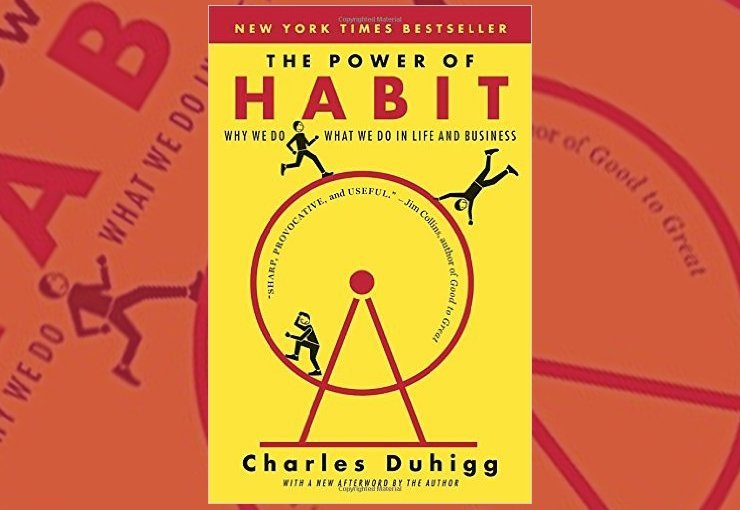The Power of Habit was written by Charles Duhigg, a Pulitzer Prize-winning business reporter for the New York Times. The book has a simple principle about our habits and how we can change them. It tells that our habits never really disappear, but we can overwrite them to create new ones. The book was written in a creative and engaging way which could really catch the attention of those reading it. It is divided into three parts: The Habits of Individuals, The Habits of Successful Organizations, and The Habits of Societies.
One of the best things about this book is how it simplifies the science of habits for our daily use. Duhigg optimistically states that it is important to understand that habits are not written in our DNA. They might become a part of our personality over time; yet, they are not ingrained in our genetic make-up. He explains in this book how people need to understand that they can easily change their habits if they want to. It is a unique understanding, according to Duhigg, that we have all the power to modify, alter, or rebuild our habits.
Easily enough, Duhigg stresses how the only option forward after understanding this basic science about habits is to get to work and control our habits.
Duhigg explains in the book that we are all habitual people, and our habits are composed of three different parts, or what is called the habit loop: the cue, the routine, and the reward. The cues are like triggers, and there are certain situations we can be in that can urge us to fall into our habits, such as where we are, what we are doing at the moment, and what time of the day it is. The routine pertains to the act or the habit itself.
Those can be good habits such as exercising, brushing your teeth, cleaning, etc., or bad habits such as smoking, eating junk food, biting your nails, etc. The reward refers to the feeling we get after completing our routine. For example, when smoking a cigarette, we get momentary stress relief after doing it.

Another example of a habit Duhigg mentioned in the book was tooth brushing. Back in the twentieth century, people had very poor dental hygiene, meaning there was no identified cue yet for brushing the teeth. Claude C. Hopkins, one of the well-known ad men in history, developed a film on one’s teeth which became the cue, and tooth brushing was the routine.
The reward for this habit was created by the people at Pepsodent. They added mint flavor to the toothpaste, which gave people a clean feeling after tooth brushing. Through ads, tooth brushing has become a habit of almost all people.
Based on the book, habits also have something to do with why some authors find it hard to introduce a new kind of story to the readers and why publishers choose stories such as Twilight, The Hunger Games, and other popular movies over new ones. It is because readers tend to look for familiar stories which will give them the same reward they got from the previous books they’ve read.
According to Duhigg, habits are not destiny because they can be ignored, changed, or replaced. When a habit emerges, our brains stop fully participating in decision-making. It stops working hard as its focus diverts to another task. The pattern will unfold automatically unless we fight a habit and find new routines. However, our habits never really disappear. We can only overwrite them, but it’s easy to go back to the old ones. What’s good about the book is that Duhigg used lots of scientific studies as a backup to further explain the power of our habits.

The Power of Habit also focuses on the success of companies such as Alcoa, Starbucks, and P&G Febreeze, which are all interesting to know. It tackles when willpower becomes automatic, how leaders create habits, and when companies predict habits. One of the most compelling examples regarding willpower by Duhigg in this book is how big companies like Starbucks have practical plans to protect their employees’ willpower. Habits make monotonous work easier, and it quickly turns into a routine upon which our mind does not have to work significantly.
Starbucks employees have pre-scripted processes that they must follow for every order on their menu. Following those processes repeatedly for a long time enables their workers to have their minds free to concentrate on other vital tasks, such as handling challenging encounters with customers or a long queue on hectic days.
The book is highly relatable because all of us have good and bad habits. However, some things that seem to be missing or what Duhigg did not focus on much, which we hoped he did, were about identifying the trigger or the cue to our habits and some downsides about the habit loop. He focused mainly on the positive habits, though he did tackle a few negative habits towards the end of the book, such as smoking and procrastination.
Another prominent recurring theme in the book is the lack of a recipe for habit changing. Despite Duhigg’s loads of examples from the current times and everyday life, it is still unclear how the same formula for changing habits or rebuilding them applies to people’s lives. Not all the examples he quotes in this book apply to every situation. Also, he failed to consider how modifying or changing habits is not merely about learning or unlearning anything. It is more than just that.
Some habits are influenced by addictions or compulsions that are not easy to change without any intervention or a professional’s help. Duhigg’s examples, no matter how familiar and easy to understand they seem, might be a little too general. A perspective of social psychology in changing habits of individuals and societies would have added a more holistic touch to this book. Nevertheless, this book is an excellent start for digging a little into the human mind and how it works concerning development, modification, or unlearning habits.
Conclusion
All in all, we can say that The Power of Habit is a great book. It provides a lot of insights on how good habits can be created and how bad habits can be changed. Though it has a lot of scientific studies and explanations in it, Charles Duhigg has written it in a creative and entertaining way that will not bore the readers. It is a motivational book, and we highly recommend it to anyone interested in changing their bad habits, as well as to those who are fascinated by how our brains work.
Also, remember to adopt the best habits that can help you live a healthy life.

